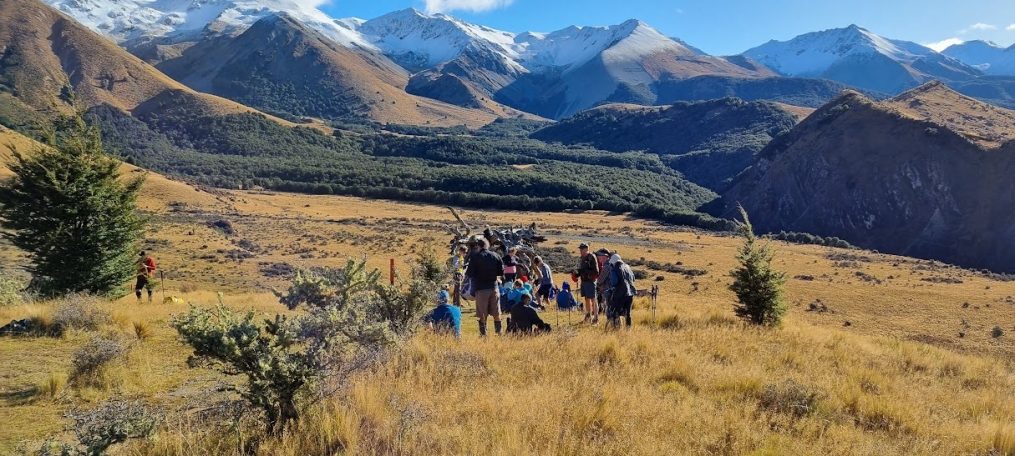| Group | Leader | Mentor | Understudy | Tailender |
| Stds | Dave R | Warren | Jan Bbr | Judy |
| Alternates | Leonie | Liz | Margaret S | Eric S |
Stats: distance 15km, ascent 568m, time 4hrs 30mins
With 43 trampers and our Driver Victor we arrived at Barnett Park in Redcliffs for the tramp over the hill to Pony Point. Chocolates had been supplied along the way thanks to Kiwan who was celebrating a birthday.
The weather conditions looked promising, in contrast to the previous year when the tramp was abandoned shortly after the trampers set off due to the gradually increasing rain and cold wind.
From the car park the 29 standards followed by the 14 alternates headed off across the playing fields to the Eastenders Track at the bottom of the hill.
The uphill wasn’t too arduous with plenty of zigzags, but around three quarters of the way up there was a feeling of deja vu as the first spots of rain were felt. Nothing to worry about though so both groups carried on until it did get worrisome, and a stop was made for everyone to put on wet weather gear. There was no choice but to continue on, in the by now persistent rain and strong wind, hoping the stand of pine trees at the usual morning stop on the summit road would allow a bit of cover.
The large trunks were a bit of a buffer from the wind and rain, so the trampers spread out looking for a suitable tree to shelter behind. There was a bit of discussion about what to do next, but it was felt the wild weather would pass over fairly quickly allowing the tramp to proceed as planned.
Sure enough as the standards emerged from the trees after tea, the rain petered out and blue sky could be seen on the horizon. The standards then crossed the road and continued upward to the radio masts on top of Mt pleasant, with a brief stop to take in the view over Lyttelton harbour, before heading down and reaching the Major Hornbrook Track which was carefully negotiated down into Lyttelton. The alternates meanwhile took the Summit Road option and had passed through Lyttelton earlier. Lunch by the Marina in Lyttelton was a lot more civilised with plenty of seating at large picnic tables, or low walls.
From there it was an easy walk along the pleasant coastal track to Corsair Bay, which was unusually quiet, and then around the point into Cass Bay. The standards arrived just as the alternates who had stopped there for lunch were preparing to move on. Rather than opting for the usual pick-up point at Cass Bay, the alternates carried on up to Pony Point, taking the shorter steeper direct route, while the standards took the longer route that zig zagged up the hill. While at Cass Bay there had been some discussion about how the striking copper clad house that featured on Grand Designs (along with some members of the tramping club) had weathered to a deep red from the original copper colour.
Reaching the top at Pony Point it was disappointing to see the carved Maori Pou Whenua (which was created as a “flute” to resonate in the easterly wind), which was often a target for vandals had disappeared altogether due to the latest destruction.
There was enough time for a stop before returning to Bishopdale and instead of the usual offerings in Heathcote Valley, the bus carried on into Lyttelton, where there were plenty of options for refreshments or browsing the shops.





















































